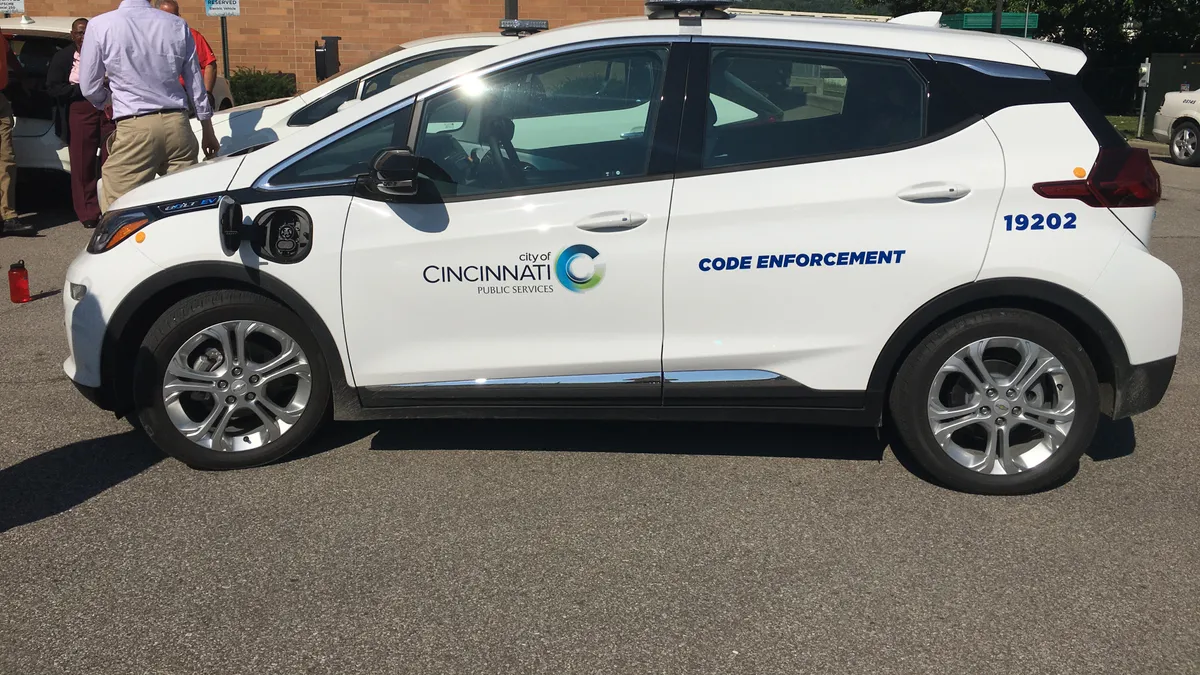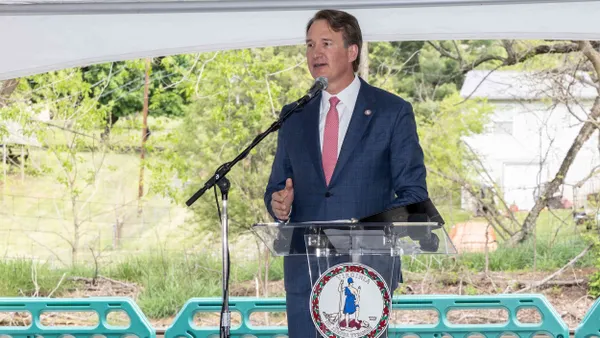Dive Brief:
- Cincinnati added the first three electric vehicles (EVs) to its city fleet this spring and intends to add 20 more, plus more than 160 charging stations, by the end of next year.
- The two Nissan Leafs and one Chevrolet Bolt are part of the Department of Public Services fleet, funded through a 2019 city budget allocation of $100,000 for EVs. Another $97,000 is included in the 2020 budget for EVs, City of Cincinnati Climate Advisor Carla Walker told Smart Cities Dive. Employees had their first EV training last week.
- The city is also working to raise citizen awareness of and exposure to EVs through multiple partnerships. For example, one strategy is working with the Ohio-Kentucky-Indiana Council of Governments (OKI) to host "ride and drives" where consumers can try out EVs. The city is also connecting with car dealerships that have EVs and member organizations. "Ultimately, our plan includes creating an electric vehicle experience for consumers in this market to demystify EVs and address any misconceptions or unknowns about driving [or] owning an electric vehicle," Walker said.
Dive Insight:
Adding EVs to the city fleet is the beginning of Cincinnati's exploration of electric vehicle technologies. It will serve as a test program to monitor real-world applications including duty cycle range, maintenance and cost savings, Walker said. Collecting and analyzing data will help the city determine how and where to expand EVs within the fleet.
The 2018 Green Cincinnati Plan called for a reduction in the city fleet's fuel consumption, and the city's goal is to transition its entire city fleet to electric vehicles by 2035. The city also aims to run on 100% renewable energy by that time.
City fleets prove to be a good starting point for reducing emissions and meeting sustainability goals, in a large part because of the sheer number of vehicles used for public services. Last fall, Seattle Mayor Jenny Durkan signed an executive order for a 10% reduction in the city's fleet of more than 4,100 vehicles by the end of 2020, and to prioritize hybrid and electric options when purchasing new vehicles for the fleet.
City fleet electrification not only helps to meet sustainability, energy efficiency and climate goals, it also is a way for cities to lead citizens by example.
Installing EV charging infrastructure throughout the city is another strategy to increase citizen uptake of the vehicles. EVs aren't a feasible option for most consumers without adequate means to keep them charged when away from their homes.
The EV transition fits into Cincinnati's climate action plan as one of the Bloomberg American Cities Climate Challenge winners, for which it receives about $2.5 million. Bloomberg Philanthropies selected Cincinnati in part because of its plan to reduce air pollution and citywide emissions. The city's participation in the two year accelerator program runs through the end of next year.












